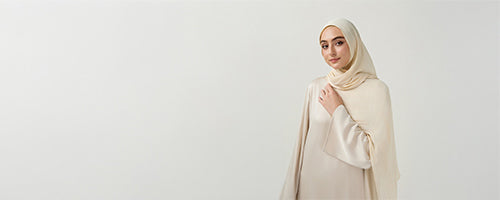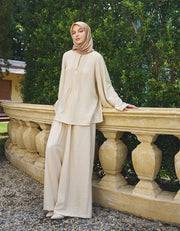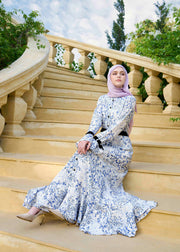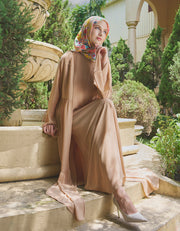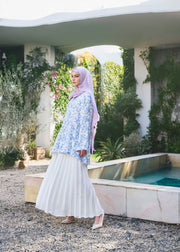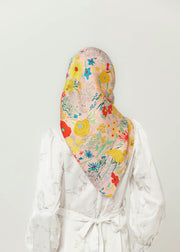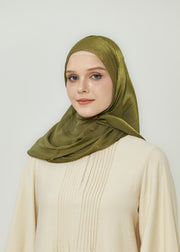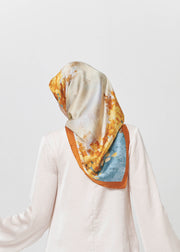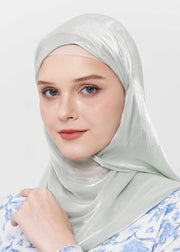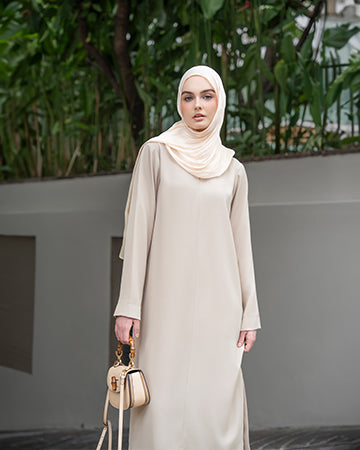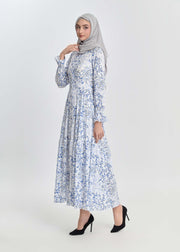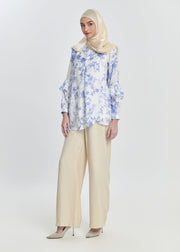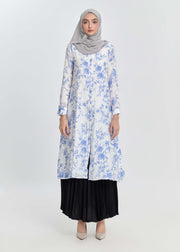Synthetic Fabrics in Islamic Fashion: Pros and Cons
Introduction to Synthetic Fabrics in Islamic Wear
Islamic fashion today combines tradition with modern textile innovations. One of the biggest shifts in recent decades has been the rise of synthetic fabrics in Islamic wear. Materials such as polyester, nylon, and rayon are widely used in abayas, hijabs, maxi dresses, and tunics because they are affordable, durable, and versatile.
However, many Muslim women often wonder whether synthetic fabrics in Islamic wear are the best choice compared to natural materials. To answer that, let’s explore both the benefits and drawbacks of using these fabrics in modest clothing.
Advantages of Synthetic Fabrics in Islamic Wear
Synthetic fabrics are popular in Islamic modest fashion for several reasons:
-
Affordability – Compared to silk or linen, polyester and nylon are budget-friendly.
-
Durability – Resistant to wrinkles, stretching, and shrinking, making them practical for everyday use.
-
Versatility – Can mimic the texture of natural fabrics such as silk or chiffon.
-
Color Retention – Hold dye well, allowing vibrant hijabs, abayas, and dresses.
-
Low Maintenance – Easy to wash and quick-drying.
These advantages make synthetic fabrics in Islamic wear attractive for women who want stylish modest clothing without spending too much.

Advantages of Synthetic Fabrics in Islamic Wear
Disadvantages of Synthetic Fabrics in Islamic Wear
Despite their benefits, synthetic fabrics also have drawbacks, especially for modest fashion:
-
Breathability Issues – Synthetic fabrics often trap heat, making them uncomfortable in hot climates.
-
Less Eco-Friendly – Polyester and nylon are petroleum-based and not biodegradable.
-
Skin Sensitivity – Some women may experience irritation or discomfort when wearing synthetic fabrics directly on the skin.
-
Static and Clinginess – Can cause outfits to stick to the body, which may compromise modesty if not layered properly.
These cons show why many Muslim women balance synthetic fabrics in Islamic wear with natural fabrics for comfort and modesty.
Common Types of Synthetic Fabrics in Islamic Wear
Several synthetic fabrics are widely used in modest fashion:
-
Polyester – Lightweight, wrinkle-resistant, and common in abayas and hijabs.
-
Nylon – Strong and durable, often used in blended fabrics for modest sportswear.
-
Rayon/Viscose – Semi-synthetic, mimics silk or cotton with a softer feel.
-
Spandex/Elastane – Provides stretch, useful in underlayers or active modest clothing.
These synthetic fabrics in Islamic wear allow for innovation in design while catering to the practical needs of modern Muslim women.
Balancing Synthetic and Natural Fabrics in Islamic Wear
The best approach is often blending. Many modest fashion brands use fabric blends, such as cotton-polyester or silk-rayon, to combine the strengths of natural and synthetic textiles.
For example:
-
A cotton-polyester maxi dress offers breathability with wrinkle resistance.
-
A silk-rayon abaya combines elegance with affordability.
-
A spandex-blended tunic provides flexibility for modest activewear.
By mixing natural and synthetic fabrics in Islamic wear, women can enjoy both comfort and practicality.

Balancing Synthetic and Natural Fabrics in Islamic Wear
When to Choose Synthetic Fabrics in Islamic Wear
Synthetic fabrics are especially useful in certain contexts:
-
Travel – Wrinkle-resistant and easy-care fabrics are ideal for long journeys.
-
Sports & Activewear – Nylon and spandex blends provide flexibility and durability.
-
Budget-Friendly Outfits – Polyester abayas or hijabs are stylish yet affordable.
-
Formal Looks – Rayon blends can mimic luxurious silk at a lower cost.
Knowing when to wear synthetic fabrics helps Muslim women build versatile wardrobes for different occasions.
Caring for Synthetic Fabrics in Islamic Wear
To extend the life of synthetic fabrics in Islamic wear, proper care is essential:
-
Wash on gentle cycles to prevent pilling.
-
Avoid high heat when ironing or drying, as it can damage fibers.
-
Use fabric softener to reduce static cling.
-
Store in cool, dry places to prevent odors or mildew.
With the right care, synthetic fabrics maintain their appearance and functionality for a long time.

Caring for Synthetic Fabrics in Islamic Wear
Conclusion
Synthetic fabrics in Islamic wear offer both opportunities and challenges. They provide affordability, versatility, and durability, making them a staple in modest wardrobes. Yet, they may lack the breathability and eco-friendliness of natural fabrics.
For the best results, many Muslim women choose blends—combining synthetic fabrics with natural ones to achieve comfort, modesty, and style.
If you’re looking for modest outfits that strike the right balance between fabric quality and modern design, explore the collections at Minnaba, where elegance and modesty meet.

